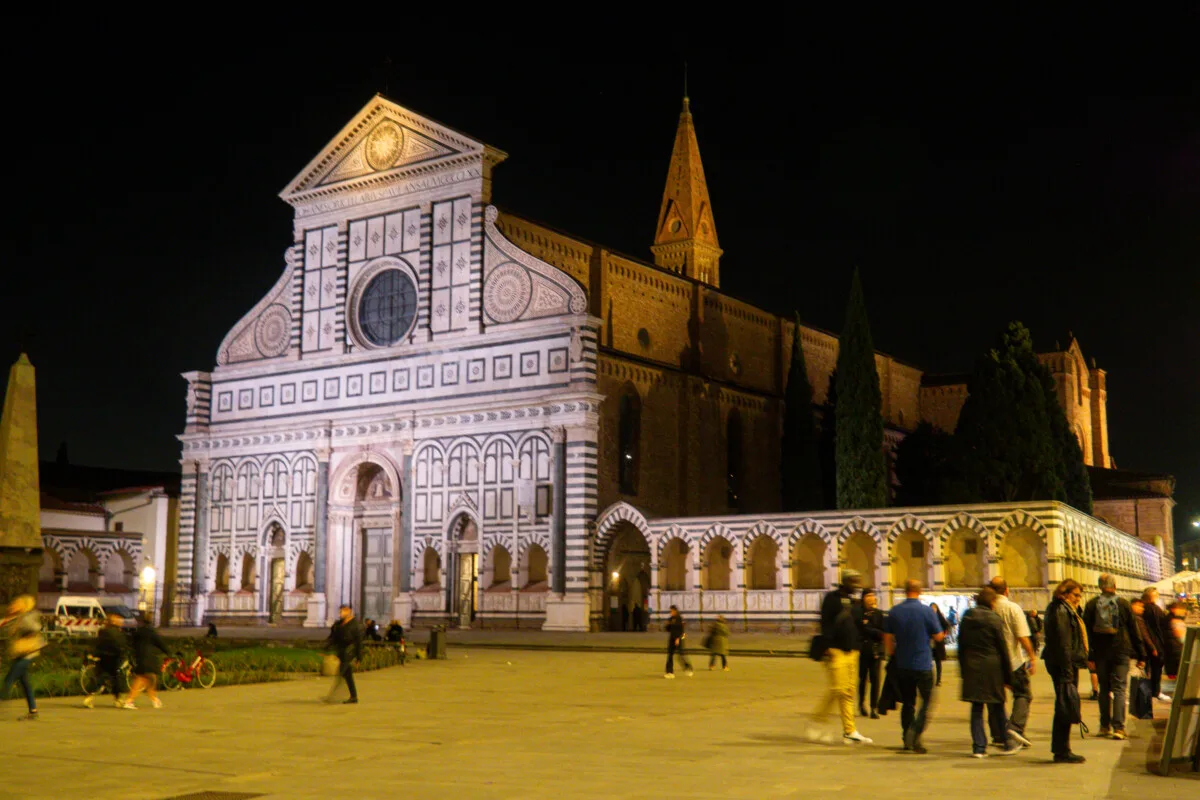Basilica of Santa Maria Novella
2 min read
About Basilica of Santa Maria Novella
Nestled in the heart of Florence, the Basilica of Santa Maria Novella, a masterpiece of Gothic and early Renaissance architecture, transcends time. Housing divine frescoes by masters such as Masaccio and Ghirlandaio, each brushstroke narrates tales of spirituality and human endeavor. The façade, an exquisite green and white marble canvas, invites the curious and devout.
Beyond its doors, the scent of ancient incense mingles with whispers of centuries past. Visitors are treated to a visual feast and a journey through history. A typical stay unravels layers of cultural significance, leaving one enriched by this bastion of faith and art.
Video Guide
The Basilica of Santa Maria Novella in Florence holds significant global influence as one of the city’s principal Dominican churches. This basilica is renowned for its historical impact as the first great basilica in Florence. It stands as a distinguished monument to the religious and artistic history of the region. The architectural and artistic significance of Santa Maria Novella is evident in its Gothic beauty, making it one of the more important churches in Florence.
For hundreds of years, the basilica played a pivotal role as a powerful center of education and a focal point for learning, reflecting its enduring impact on culture and knowledge. Efforts to preserve Santa Maria Novella’s historical and cultural significance are essential to maintaining its status as one of the most important churches in Florence.
- Cultural Authenticity: The Basilica of Santa Maria Novella in Florence maintains and represents local traditions and cultural practices through Romanesque and Gothic architectural styles and historical significance as the city’s first great basilica.
- Historical Significance: The basilica is significant within its cultural and national context. Since its establishment in the 13th century, it has been a significant religious and cultural center in Florence. It also played a key role in developing Gothic and early Renaissance art.
- Artistic Value: The basilica is renowned for its artistic value. It houses notable works such as Giotto’s crucifix and frescoes by masters of the Gothic and early Renaissance, including the Holy Trinity by Masaccio and St. Lucy.
- Social Impact: The Basilica of Santa Maria Novella has a significant role in the community as the principal Dominican church in Florence, contributing to the religious and social fabric of the city.
- Accessibility and Preservation: The basilica’s location is accessible to the public, and preservation efforts have been effective in maintaining the integrity of its architecture and artistic treasures.
- Visitor Engagement: Visitors can interact interactively with the culture and community through guided tours, educational programs, and exploration of the basilica’s historical and artistic significance.
- Educational Value: The basilica provides extensive learning opportunities about the culture, history, and art of Florence, offering insights into the development of religious and artistic practices in the region.



